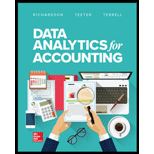
Identify the component which is not included in the DuPont analysis of return on equity (ROE).
Answer to Problem 1MCQ
Option b. Inventory turnover is not included in the DuPont analysis of return on equity (ROE).
Explanation of Solution
DuPont analysis of return on equity (ROE):
The DuPont ratio is one of the popular methods for analyzing performance and ratios. The DuPont ratio was derived by the Corporation D for measuring the performance of the entity in the form of return on equity ratio. The DuPont analysis breaks the return on equity into three different types of ratios which are:
- Profit margin or profitability
- Asset turnover or activity ratio
- Financial leverage or solvency ratio
Justification for correct and incorrect answer:
a.
Asset turnover: This is not the correct choice as the asset turnover is one of the components which are included in the DuPont analysis of return on equity (ROE). It denotes the operating leverage.
b.
Inventory turnover: This option is the correct option because the inventory turnover ratio is not one of the components which are included in the DuPont analysis of return on equity (ROE).
c.
Financial leverage: This option is incorrect because the financial leverage is one of the components which are included in the DuPont analysis of return on equity (ROE). It denotes the solvency of the organization.
d.
Profit margin: This is an incorrect option because the profit margin is included in the DuPont analysis which is used for the profitability of the entity.
Want to see more full solutions like this?
Chapter 8 Solutions
Data Analytics For Accounting
- Sierra Systems Inc. reported a net income of $500,000 in 2023. The company's common stockholders' equity was $800,000 on January 1, 2023, and $950,000 on December 31, 2023. Sierra Systems has 12,000 outstanding shares of 7%, $40 par value cumulative preferred stock. During December 2023, the board of directors declared the annual preferred stock dividend and a $80,000 common stock dividend. www. What is Sierra Systems' 2023 return on common stockholders' equity? A. 49.5% B. 53.3% C. 57.4% D. 59.0%arrow_forwardFinancial Accountingarrow_forwardIf you give me wrong answer this financial accounting question I will give you unhelpful ratearrow_forward
 Intermediate Financial Management (MindTap Course...FinanceISBN:9781337395083Author:Eugene F. Brigham, Phillip R. DavesPublisher:Cengage Learning
Intermediate Financial Management (MindTap Course...FinanceISBN:9781337395083Author:Eugene F. Brigham, Phillip R. DavesPublisher:Cengage Learning Cornerstones of Financial AccountingAccountingISBN:9781337690881Author:Jay Rich, Jeff JonesPublisher:Cengage Learning
Cornerstones of Financial AccountingAccountingISBN:9781337690881Author:Jay Rich, Jeff JonesPublisher:Cengage Learning



